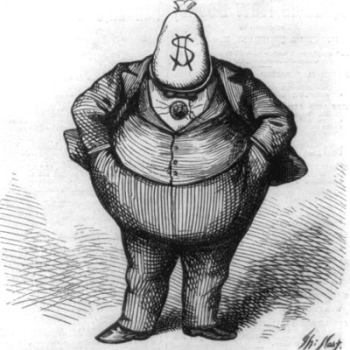Susie Madrak notes that the shutdown deal in Congress cuts winter heating aid for low-income families.
I used to be confused as to why LIHEAP was always among the first programs on the chopping block when states or the federal government wanted to cut the budget.
LIHEAP, the Low-Income Home Energy Assistance Program, helps low-income families pay the heating bill.
Congress just cut the program by 25 percent — or $3.5 billion. Every one of those dollars would have gone to keep a poor family warm in the winter, meaning that those families wouldn’t have KEPT any of it. Every dollar of that funding would have quickly passed through the hands of those families and gone directly to big corporations — first the utility companies, then the energy companies that supply them.
And that’s why these cuts confused me. I figured that, very roughly speaking, we’ve got two kinds of lawmakers: the kind who like welfare programs for the poor and the kind who like corporate welfare. LIHEAP is both of those things. Every dollar of it does double duty — the poor make it through the winter and big corporations get handed billions of dollars of taxpayer money. Win-win. Everybody’s happy.
But then in 2007 I watched the financial crisis happened and the powers that be sprang into action to rescue the banks — as they absolutely ought to have done. The global financial system had ground to a halt and the world’s economies were teetering on the brink until the Treasury and the Congress slapped together the TARP and bailed out the faltering banks with $700 billion.
At the time, this seemed like an outrageous surprise. But it did have to be done. If not for the TARP, or Troubled Asset Relief Program, the jobs crisis we’re still stuck in would likely have been even more severe. But while the banks had to be saved, they didn’t necessarily have to be saved in that way.
The banks were given the money to make up for expected losses from “toxic assets.” Those toxic assets were things like home mortgages from homeowners whose houses were suddenly worth far less than the cost of the loan.
So there were two ways to bail out the banks. We could have given a chunk of that $700 billion to those underwater homeowners, turning those “toxic assets” into just plain assets. That money, like LIHEAP funds, would have passed quickly through the hands of those homeowners and on to the banks. And thus, like LIHEAP, the TARP would have solved two problems at the same time — simultaneously lifting underwater families out of debt and bailing out the banks.
But instead, the TARP funds went directly to the banks. Thus the banks got bailed out, but the homeowners are still in debt.
And I realized that this is how it works.
We had to help the banks without helping the homeowners — help the creditors without helping the debtors — for the same reason that LIHEAP is always first in line for budget cuts. Because, for the people running the show, it’s no fun giving billions of dollars to the super-rich unless you’re also screwing over the poor.
This was, after all, how the tea party started — with CNBC’s Rick Santelli ranting against mortgage modifications for homeowners left underwater after the housing market collapsed.
“How many people want to pay for your neighbor’s mortgages?” Santelli screamed. “It’s time for another tea party.”
And that, ladies and gentlemen, is why we can’t have nice things.
















